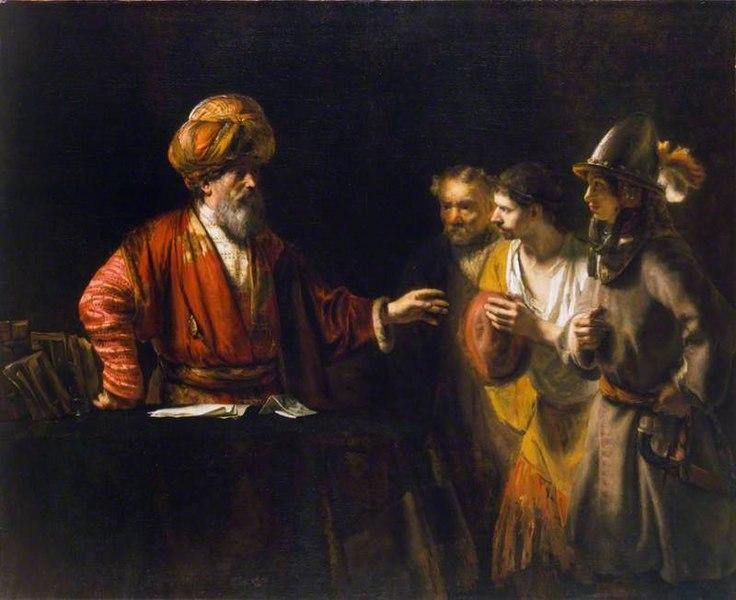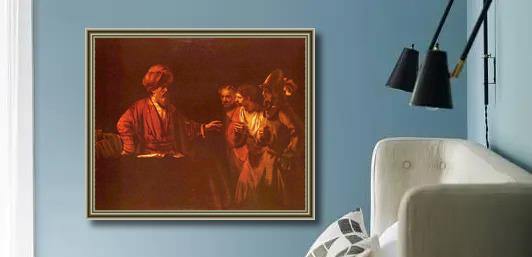Description
In the 19th century this painting was believed to be the work of Rembrandt and was by far the most expensive in Lord Hertford's collection of paintings attributed to the artist. In 1935, it was again attributed to a student or follower of Rembrandt, and the exact identity of the author remains in dispute to this day.
The issue is also still the subject of debate. It has sometimes been identified as the parable of the unmerciful servant, taken from the New Testament, in which a king forgives a servant's debts, only to find that the servant refuses such leniency with a fellow servant. An alternative reading is an illustration of the story of Centurion Cornelius, also from the New Testament. Cornelius had a vision of an angel, who ordered him to send men to look for the apostle Peter of Joppa. Cornelius, here depicted as the lord of his house rather than a military commander, did as the angel told him. He called for "two of his domestic servants, and a devoted soldier from those who continually attended him," a description that fits the appearance of the men who stand in attentive poses to the right.
The issue is also still the subject of debate. It has sometimes been identified as the parable of the unmerciful servant, taken from the New Testament, in which a king forgives a servant's debts, only to find that the servant refuses such leniency with a fellow servant. An alternative reading is an illustration of the story of Centurion Cornelius, also from the New Testament. Cornelius had a vision of an angel, who ordered him to send men to look for the apostle Peter of Joppa. Cornelius, here depicted as the lord of his house rather than a military commander, did as the angel told him. He called for "two of his domestic servants, and a devoted soldier from those who continually attended him," a description that fits the appearance of the men who stand in attentive poses to the right.



